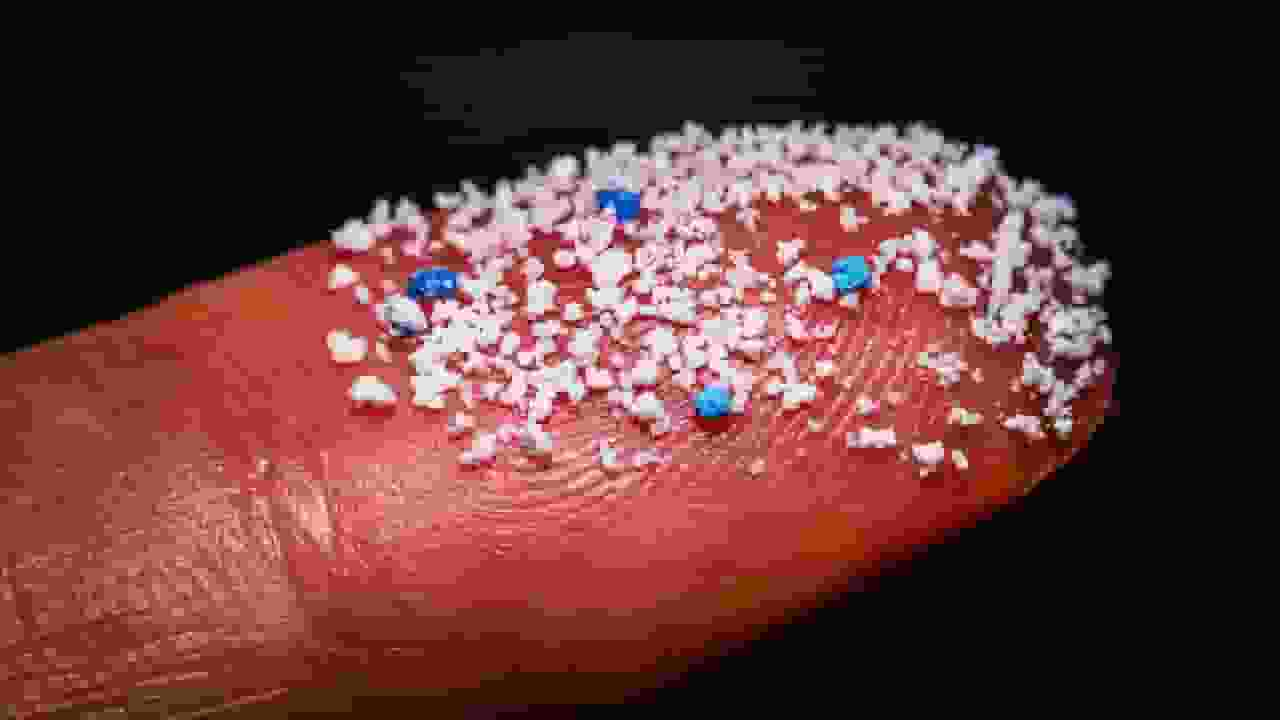Microplastic contamination may be found in our oceans, mountains, food, and even our bodies. Microplastics have been identified in clouds, according to a new research released Wednesday, and they may be influencing our weather.
The study was done by Chinese researchers and published in the journal Environmental Science & Technology Letters, a publication of the American Chemical Society.
“Plastics are a pervasive pollutant; everywhere we look, we find them,” said Christopher Reddy, an environmental scientist at the Woods Hole Oceanographic Institution who was not involved in the study. “This is a good study; I’m very impressed with the quality of the work, which is careful and meticulous,” he added.
“It’s not good news, but it’s good science,” noted Reddy.
Microplastics are microscopic plastic particles produced by the gradual disintegration of larger garbage items such as clothes, packaging, and automobile tires. They are made of any sort of plastic that is smaller than five millimeters long.
“Microplastics are in the air we breathe, in our drinking water, and they’re in our bodies,” said Judith Enck, president of Beyond Plastics, to CNN. “If it’s plastic, you’re going to get microplastics sooner or later,” she told me.
Shandong University scientists led by Yan Wang gathered 28 liquid samples from clouds at the top of Mount Tai in eastern China. They discovered the following in the samples:
- Microplastics were more abundant in lower-altitude and thicker clouds.
- Polymers were used to make the particles.
- The microplastics were mostly less than 100 micrometers long, although some were as long as 1,500 micrometers. (A micrometer is 1000 times the size of a millimeter.)
- Older, rougher particles contained more lead, mercury, and oxygen bound to their surfaces, which the researchers believe might promote cloud formation.
How does the presence of microplastics in clouds affect upcoming weather patterns?
The researchers then utilized computer models to figure out how the microplastics got there, as well as how the particles may have touched – and been influenced by – the clouds.
According to the models, airflow from densely populated inland towns, rather than airflow from the coast or other adjacent mountains, was the dominant source of microplastics.
According to NOAA, clouds “play a vital role in our climate by regulating the amount of solar energy that reaches the surface and the amount of Earth’s energy that is radiated back into space,” in addition to causing rain and snow.
The researchers then utilized computer models to figure out how the microplastics got there, as well as how the particles may have touched—and been influenced by—the clouds.
According to the models, airflow from densely populated inland towns, rather than airflow from the coast or other adjacent mountains, was the dominant source of microplastics.
According to NOAA, clouds “play a vital role in our climate by regulating the amount of solar energy that reaches the surface and the amount of Earth’s energy that is radiated back into space,” in addition to causing rain and snow.
As a result, any more clouds formed as a result of man-made chemicals such as microplastics may have an influence on Earth’s weather and climate. “It’s possible that microplastics in clouds will influence weather,” Reddy told USA TODAY.
However, the study’s researchers concluded that further research is needed to properly understand how microplastics impact clouds.
“More research is needed to understand microplastic-cloud interactions and the potential impacts on atmospheric metal cycles and cloud formation,” said the study’s authors.
Reddy concurred, pointing out that this discovery sets the path for further research into how microplastics in clouds impact climate and weather.
More on microplastics
Microplastics are microscopic plastic particles that are produced as a result of commercial product development as well as the breakdown of bigger plastics. Microplastics, as a contaminant, can be hazardous to both human and animal health.
Microplastics entangle living creatures. A sample of water taken off the coast of Hawaii demonstrates how microplastics are entwined in the daily lives of marine species.
Microfibers shed from clothes and other fabrics, such as fishing nets, are examples of primary microplastics. Secondary microplastics are particles that form when bigger plastic products, such as water bottles, degrade. This disintegration is produced by exposure to environmental elements, including sunlight and ocean waves.
The issue with microplastics is that, like other plastics, they do not easily degrade into harmless molecules. Plastics can take hundreds or thousands of years to disintegrate, wreaking havoc on the ecosystem in the interim. Microplastics are apparent on beaches as small, colorful plastic particles in the sand. Microplastic contamination is frequently ingested by marine organisms in the oceans.
Some of this pollution is caused by littering, but much of it is caused by storms, water runoff, and winds that transport plastic—both whole items and microplastics—into our seas. The largest source of secondary plastics in the environment is single-use plastics, which are plastic products that are used once and then discarded, such as straws.
Microplastics have been found in marine creatures ranging from plankton to whales, as well as commercial seafood and even drinking water. Surprisingly, ordinary water treatment facilities are incapable of removing all residues of microplastics. To make matters even more complicated, microplastics in the ocean can bond with other hazardous compounds before being consumed by marine creatures.
Scientists are unsure if eaten microplastics are damaging to human or animal health and, if so, what specific risks they may represent. Nonetheless, several countries are taking steps to limit the amount of microplastics in the environment. A United Nations resolution from 2017 addressed microplastics and the need for measures to limit the risk to our seas, animals, and human health.




![Tyson Foods Plant [Photo: Food Manufacturing]](https://southarkansassun.com/wp-content/uploads/2023/08/iStock_1185520857__1_.5e441daa51cca-600x337.jpg)







![Silverado Senior Living Management Inc. [Photo: Los Angeles Times]](https://southarkansassun.com/wp-content/uploads/2023/10/download-6-4-600x337.jpg)

![China's Wuhan Institute of Virology [Photo: Nature]](https://southarkansassun.com/wp-content/uploads/2023/09/d41586-021-01529-3_19239608-600x337.jpg)
















